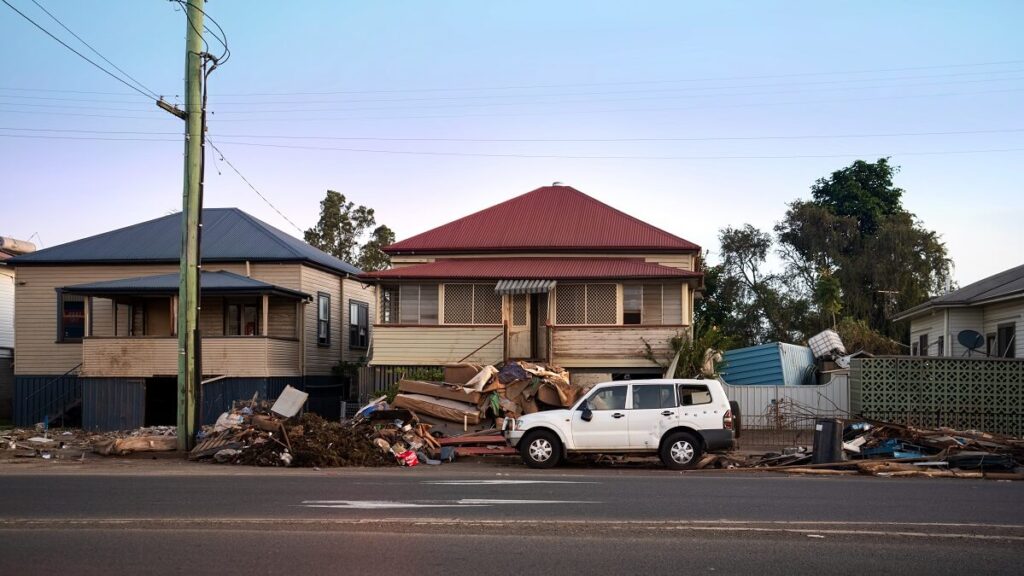Insurance premiums are rising at a rate not seen for two decades on the back of extreme weather events.
Insurance premiums are rising faster than inflation, new research has found, and Aussies doing it tough are being hurt even further.
Last week’s Consumer Price Index (CPI) figures showed home and car insurance premiums were one of the main drivers of inflation, with an average 16 per cent increase that dwarfed the overall inflation rate of 4.1 per cent.
The price increases are forcing some Aussies to drop their home and vehicle cover entirely, leading to big swathes of the country being exposed to potential financial ruin.
Why are insurance premiums rising so fast?
The short answer is climate change. With fires, floods and other natural disasters becoming more frequent, insurers say they are being forced to lift premiums in order to stay in business.
Andrew Hall, chief executive of the Insurance Council of Australia, told a federal parliamentary inquiry on Monday that planning laws needed to be changed to prohibit buildings in ‘high-risk’ areas.
He says lax planning regulations are “unnecessarily worsening” the impact of extreme weather events.
“Wherever you live in Australia, whether you’re directly exposed to extreme weather impacts or not, premiums are rising because of the escalating costs of natural disasters … inflation driving up building and vehicle repair costs and the increasing cost of capital for insurance,” Mr Hall said.
He defended the decisions, arguing that extreme weather and high costs of labour, building replacement, car parts and repairs mean above-inflation increases are necessary.
Economics professor Paula Jarzabkowski, from the University of Queensland, told Guardian Australia that price hike cycles are common after a natural disaster, but the frequency of recent events hasn’t given premiums time to go down again.
“You usually get a spike in premiums for a year or two after a disaster and then it all settles back down again,” she said.
“What we’re seeing now is a fundamental change in the way the insurance market works.
“You’re going to find that some people simply can’t afford insurance and so they will drop out of the market. We’ve built in places we probably shouldn’t have built in and, after climate change, they’re definitely not robust.”
Problem not spread evenly
The situation isn’t spread evenly across the nation either. Although average premiums rose by 16 per cent overall, in high-risk areas premiums have jumped by more than 50 per cent in the last year.
Research from the Climate Council found most ‘uninsurable’ federal electorates were located in NSW and Queensland, with some notable exceptions.
By 2030, the Climate Council says 15 per cent of the houses in the electorates of Nicholls and Indi (Victoria), Richmond and Page (NSW), Maranoa, Moncrieff, Wright, Brisbane and Griffith (all in Queensland), and Hindmarsh (SA) will be functionally ‘uninsurable’.
From the same data, it’s estimated that 40 federal electorates across Australia will have at least four per cent of properties classified as uninsurable. Eighteen of these electorates (or 45 per cent) are in Queensland.
Has your home insurance skyrocketed recently? Do you live in one of these high-risk electorates? Let us know in the comments section below.
Also read: Law firm claims insurers are punishing loyal customers

